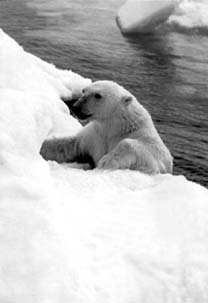Nowhere to go
 conservationists are a worried lot these days. In the past, when climate changed living beings could move from one place to the other. But now the situation is different. Global warming threatens to tear some protected ecosystems completely apart as species invade, flee, breed at odd times or go extinct because they cannot adapt. Climate change seems to be threatening even national parks and nature reserves that are considered to be a safe haven for plants, birds and animals.
conservationists are a worried lot these days. In the past, when climate changed living beings could move from one place to the other. But now the situation is different. Global warming threatens to tear some protected ecosystems completely apart as species invade, flee, breed at odd times or go extinct because they cannot adapt. Climate change seems to be threatening even national parks and nature reserves that are considered to be a safe haven for plants, birds and animals.
A case in point is the Glacier National Park in Montana, usa. In 1850, there were about 150 thick glaciers in the park. Today only 37 remain and they, too, are melting away. At this rate, all the glaciers could disappear by 2030, says Daniel Fagre, an ecologist at the us Geological Survey. It is not just the scenery that will be affected. Peak streams are getting less summer snow melt due to the changing precipitation patterns. As a result, some streams will warm, threatening some invertebrates that form the bottom of the foodchain for fish. Even Park wetlands are in danger of shrinking, stranding the voles that live among soggy wetland plants and leaving the birds, bears and other animals that dine on voles to look elsewhere for food.
Alarming trends A study conducted by Dutch government scientists claims that almost a fifth of the world's large nature reserves could transform into significantly different landscapes over the next 30 years. Even the journal Science in one of its reports says that climate change will be one of the biggest threats to biodiversity in the 21st century. "Climate change sets new ground rules for park planning,' says Daniel Scott, a research scientist at Environment Canada in Ottawa, Ontario.
Canada, in fact, will be one of the worst-affected countries. Its weather suits cold-loving animals such as polar bears. As temperatures soar, these animals could be in for a rude shock. Canada has been carefully setting aside a national park within each of the country's 39 types of natural areas. For instance, one park includes boreal forest, while another covers prairie grassland. The agency has, so far, designated parks in 24 such areas, says Scott. But the biome boundaries may well shift with climate, leaving the parks protecting vastly different ecosystems.
Like Canada, many countries could face similar problems. In Northeast Greenland, heavier snowfall may delay spring thaw and shorten the breeding season for migratory birds. Climate zones may shift rapidly upslope in Wolong Nature Reserve in China threatening pandas and other species. In Kakadu, Australia, rising sea level could send salt water creeping into lowland streams and wetlands. Even in India, less rains in Kanha National Park could jeopardise the moist forests of this crucial tiger refuge. And in Antarctica, warm waters could reduce the populations of Krill, the main food source for many whales. Increasing temperature of waters has already caused coral bleaching in Belize Barrier Reef, Belize, the world's second largest reef system.
For many years researchers have expressed concern about the fate of protected ecosystems in a warmer world. To find out what awaits us in the future, some have even peered into the past and studied previous climate changes from animal fossils and tree rings. Craig Allen, an ecologist at the us Geological Survey, says that fifty years ago, ponderosa pines outnumbered the pinons and junipers in New Mexico's Jemez Mountains.
Yet between 1951-1956, a stretch of forest rearranged itself. In 1956, the weather station in the area recorded a mere 150 millimetres of rain. As a result, thousands of ponderosa pines died due to thirst or bark beetles, junipers and pinons seized the opportunity offered by the new-found sunlight, scaling the mountainside and quickly filling in the gaps in the canopy. "It is a cautionary tale for how fast ecosystem edges can change with the climate,' says Allen.
Some conservationists, however, believe, that these changes are not bad after all. Repeated reshuffling of the ecological deck can support a diverse flora fauna today. But the next reshuffling may be very different from al the previous ones. In the past, species could roam across whole continents in search of wetter, cooler, drier or warmer stomping grounds. Today farms, fences and cities pen wildlife into nature resources. Explains Scott: "A moose finds it difficult to run through downtown Toronto to reach better habitat on the other side.' "If species have nowhere else to go, they could be in trouble if climate change affects their safe havens in parks,' says Barnosky.
Related Content
- Detox development: repurposing environmentally harmful subsidies
- Trends in maternal mortality 2000 to 2020
- Net zero economy index 2021: code red to go green
- United in science 2021: a multi-organization high-level compilation of the latest climate science information
- Written submission by the applicants to the CPCB report on violation of environmental norms by the thermal power plants and coal washeries, Raigarh district, Chhattisgarh, 21/06/2021
- Capital Gains: Clean Air Action in Delhi-NCR- What next?
